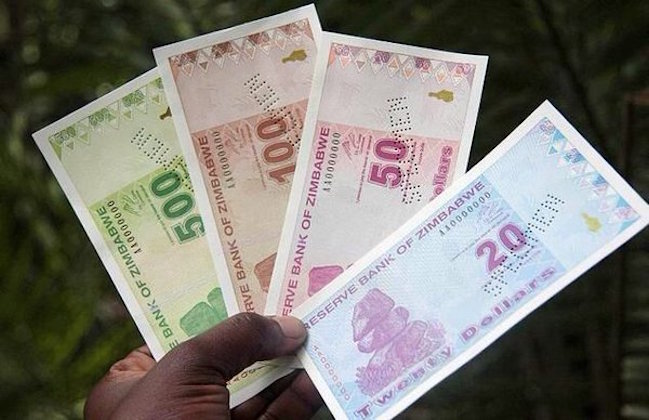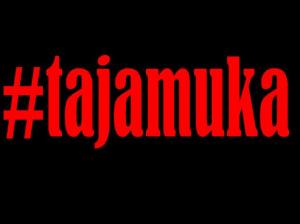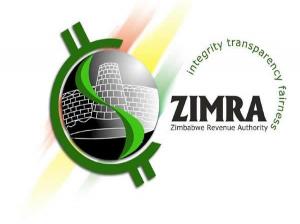RBZ Makes U-Turn On Bond Notes?

Published: 2016 May 07 06:27:37 (25798 Views)
Zimbabwe’s central bank on Friday moved to clarify its plans to introduce domestic notes to circulate alongside foreign currencies, after fears that it sought to re-introduce a loathed local currency triggered a public outcry.
On Wednesday, Reserve Bank of Zimbabwe (RBZ) governor John Mangudya announced bank withdrawal and cash export limits, as well as plans to introduce “bond notes” backed by a $200 million African Export Import Bank (Afreximbank) bond facility, in a bid to ease cash shortages that have hit the economy.
The moves provoked a backlash from Zimbabweans still smarting from the collapse of the local dollar in 2008, when hyperinflation reached an astounding 500 billion percent, according to IMF figures which many consider conservative.
On Friday, Mangudya met editors of the national press to clarify his policy statement.
While admitting that the policy pronouncement could have been better articulated, Mangudya said the main feature of Wednesday’s announcement was in fact a five percent export incentive backed by the $200 million Afreximbank facility. It is that extra five percent incentive that would be paid out to exporters in bond notes, which would then circulate in the market.
Mangudya said Zimbabwe’s widening trade deficit of $3 billion, against a trade surplus of about $200 million in 1990, required interventions that would promote exports while minimising imports.
As an incentive for exporters, the RBZ would pay a five percent incentive on all exports, while urging the government to put in place local content measures.
“So it is that five percent export incentive that will be paid out in bond notes, because if we pay in United States dollars, it will simply vanish,” Mangudya said. “This is actually a $200 million economic stimulus to stimulate local production and exports.”
The RBZ chief said there were no plans to introduce the Zimbabwe dollar by stealth.
Mangudya said the central bank did not envisage injecting the equivalent of $200 million in bond notes into circulation. Out of a possible $50 million worth of bond coins introduced in December 2014 to ease the problem of small change, the RBZ had to date issued the equivalent of $15 million into the market, Mangudya said. He said the bond notes, to be printed in Germany, were currently at the design stage.
The central bank also announced that it had imported $15.5 million on Friday, to be injected into circulation on Monday.
Zimbabwe had $4,754 billion in circulation at the end of January 2016, according to RBZ data.
The governor said the move to split export proceeds into United States dollars, South African rand and euros was meant to remove the concentration risk brought by the overwhelming use preference of the greenback to other units in the multi-currency basket.
Upon dollarization in 2009, US dollar and rand use was at an even 49 percent. Currently, the greenback dominates with 95 percent of all transactions.
- The Source
On Wednesday, Reserve Bank of Zimbabwe (RBZ) governor John Mangudya announced bank withdrawal and cash export limits, as well as plans to introduce “bond notes” backed by a $200 million African Export Import Bank (Afreximbank) bond facility, in a bid to ease cash shortages that have hit the economy.
The moves provoked a backlash from Zimbabweans still smarting from the collapse of the local dollar in 2008, when hyperinflation reached an astounding 500 billion percent, according to IMF figures which many consider conservative.
On Friday, Mangudya met editors of the national press to clarify his policy statement.
While admitting that the policy pronouncement could have been better articulated, Mangudya said the main feature of Wednesday’s announcement was in fact a five percent export incentive backed by the $200 million Afreximbank facility. It is that extra five percent incentive that would be paid out to exporters in bond notes, which would then circulate in the market.
Mangudya said Zimbabwe’s widening trade deficit of $3 billion, against a trade surplus of about $200 million in 1990, required interventions that would promote exports while minimising imports.
As an incentive for exporters, the RBZ would pay a five percent incentive on all exports, while urging the government to put in place local content measures.
“So it is that five percent export incentive that will be paid out in bond notes, because if we pay in United States dollars, it will simply vanish,” Mangudya said. “This is actually a $200 million economic stimulus to stimulate local production and exports.”
The RBZ chief said there were no plans to introduce the Zimbabwe dollar by stealth.
Mangudya said the central bank did not envisage injecting the equivalent of $200 million in bond notes into circulation. Out of a possible $50 million worth of bond coins introduced in December 2014 to ease the problem of small change, the RBZ had to date issued the equivalent of $15 million into the market, Mangudya said. He said the bond notes, to be printed in Germany, were currently at the design stage.
The central bank also announced that it had imported $15.5 million on Friday, to be injected into circulation on Monday.
Zimbabwe had $4,754 billion in circulation at the end of January 2016, according to RBZ data.
The governor said the move to split export proceeds into United States dollars, South African rand and euros was meant to remove the concentration risk brought by the overwhelming use preference of the greenback to other units in the multi-currency basket.
Upon dollarization in 2009, US dollar and rand use was at an even 49 percent. Currently, the greenback dominates with 95 percent of all transactions.
- The Source
You May Like These Videos
Comments

Anonymous user
2016 June 14 19:40:49
We have learnt from bearer notes. Madii kuedza zvimwe zvunemusoro,Nhai governor?
Anonymous user
2016 May 08 05:22:09
Government will use this so cold Bond currency to pay civil servants, use this as an opportunity to boast how it delivered on the promise to pay bonuses etc. zimra, Zesa and muncipaluties will be forced to accept it. No one else will. Then in 2018 it will be announced that it was a success and it will be scrapped.
Anonymous user
2016 May 07 17:01:24
Best way to stimulate the local economy and attract investments is to increase investor confidence that their hard work will not be unfairly taken away or undermined by corruption and bribery. There is more than $200 million waiting to be invested by Zimbabweans in the diaspora, but absolutely no confidence in the system.
Anonymous user
2016 May 07 16:48:37
Kuda kutivhara nesemantics the where will the exporter use the bond note and who will accept the notes.
Get Zim Metro Updates Alerts
Big Reads

Schoolgirl drops out after continuous 'sexual abuse' by teacher
by Staff Reporter | 2019 August 13 07:42:33
Mugabe Knows Nothing About The Zimbabwe Constitution: MP
by Staff Reporter | 2016 October 01 08:12:02
Zim's Protesting Graduates Risk Losing Degrees For Expressing Anger Against Mugabe
by Staff Reporter | 2016 October 01 07:57:08
Troubled Harare Giants Dynamos Falls Into Another Deep Crisis
by Own Correspondent | 2016 October 01 07:49:17
Grace Mugabe Grovels At Mnangagwa, Says I Did Not Ask Ubaba To Fire You
by Staff Reporter | 2016 October 01 07:31:48
Mugabe Attacks Mawarire, Claims The Exiled Pastor Failed To Divide Zimbabwe
by Staff Reporter | 2016 October 01 07:19:13
Shock As Local Bank Denies 'Rich' Mugabe's Son Heifty Credit
by Own Correspondent | 2016 September 30 19:14:54
Trouble For Police Officers Who Have Been Mercilessly Bludgeoning Protesters
by Staff Reporter | 2016 October 01 07:20:19
Mugabe "Home Coming" And "Thank You" Rally On Cards
by Own Correspondent | 2016 September 23 06:48:24
Prof Moyo Was Dumped By Western Embassies, Claims Mutsvangwa
by Staff Reporter | 2016 September 22 10:08:07
Broke RBZ Tracks Down Zimbabweans Living Outside The Country Over Taxi
by Staff Reporter | 2016 September 22 09:16:20
You Are Too Old To Lead, Aging Zim President Mugabe Told
by Own Correspondent | 2016 September 22 07:19:25
Anti-Corruption Commission Loses Property In Failed Probe
by Own Correspondent | 2016 September 20 03:18:19
SHOCKING:14 Year Old HIV-Positive Boy Rapes 7 Pupils
by Own Correspondent | 2016 September 20 00:04:55

 WATCH: Victims Narrate Ordeal After Being Clobbered By Riot Cops
WATCH: Victims Narrate Ordeal After Being Clobbered By Riot Cops FLASHBACK: Morgan Tsvangirai Won't Resign Despite Illness
FLASHBACK: Morgan Tsvangirai Won't Resign Despite Illness  Police Violently Beat Harare Protesters
Police Violently Beat Harare Protesters  Zimbabwean Man Who Was Shot By Tswana Employer Appeals For Help
Zimbabwean Man Who Was Shot By Tswana Employer Appeals For Help











.jpg)






